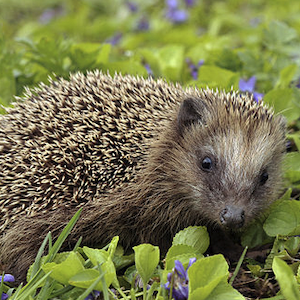The western European hedgehog Erinaceus europaeus L. 1758 on San Pietro Island (southern Sardinia, Italy) and an updated review of its presence on the Italian small islands

Submitted: 15 November 2021
Accepted: 8 March 2022
Published: 20 October 2022
Accepted: 8 March 2022
Abstract Views: 1406
PDF: 575
Publisher's note
All claims expressed in this article are solely those of the authors and do not necessarily represent those of their affiliated organizations, or those of the publisher, the editors and the reviewers. Any product that may be evaluated in this article or claim that may be made by its manufacturer is not guaranteed or endorsed by the publisher.
All claims expressed in this article are solely those of the authors and do not necessarily represent those of their affiliated organizations, or those of the publisher, the editors and the reviewers. Any product that may be evaluated in this article or claim that may be made by its manufacturer is not guaranteed or endorsed by the publisher.
Similar Articles
- Luigi Cagnolaro, Michela Podestà, Marco Affronte, Paolo Agnelli, Fabrizio Cancelli, Ernesto Capanna, Rossella Carlini, Giorgio Cataldini, Bruno Cozzi, Gianni Insacco, Nicola Maio, Letizia Marsili, Paola Nicolosi, Vincenzo Olivieri, Roberto Poggi, Tommaso Renieri, Maurizio Wurtz, Collections of extant cetaceans in Italian museums and other scientific institutions. A comparative review , Natural History Sciences: Vol. 153 No. 2 (2012)
- Matteo Riccardo Di Nicola, Walter Costa, Emiliano Mori, An evidence of asp viper (Vipera aspis) consumption by a western European hedgehog (Erinaceus europaeus) on Elba Island (Italy) , Natural History Sciences: Vol. 9 No. 2 (2022)
- Enrico Schifani, Sándor Csősz, Roberto Viviano, Antonio Alicata, Ant diversity on the largest Mediterranean islands: on the presence or absence of 28 species in Sicily (Hymenoptera, Formicidae) , Natural History Sciences: Vol. 8 No. 1 (2021)
- Armando Nappi, Small mammal remains from the Temple of Neptune, a window on the ancient landscape of the Sele Plain (Southern Italy) , Natural History Sciences: Vol. 8 No. 2 (2021)
- Fabio Cianferoni, Filippo Ceccolini, Paride Dioli, New records for Lygaeus creticus Lucas, 1854 in Italy and Corsica (Hemiptera: Heteroptera: Lygaeidae). , Natural History Sciences: Vol. 5 No. 1 (2018)
- Paolo Galasso, Giovanni Spinella, Manuel Andrea Zafarana, Antonino Barbera, Andrea Cusmano, Giovanni Cumbo, Davide D'Amico, Dario Grimaldi, Renzo Ientile, Francesco La Spina, Davide Pepi, Antonino Torre, Giancarlo Torre, Salvatore Surdo, Status, distribution and conservation of Kentish plover Charadrius alexandrinus (Aves, Charadriiformes) in Sicily , Natural History Sciences: Vol. 9 No. 1 (2022)
- Enrico Schifani, First report of underwater oviposition by the island bluetail damselfly, Ischnura genei (Zygoptera, Coenagrionidae) , Natural History Sciences: Vol. 9 No. 1 (2022)
- Nicolantonio Agostini, Gianpasquale Chiatante, Alberto Canobbio, [On the origin of the name Girifalco, an Italian town in a hotspot of the autumn migration of soaring raptors] , Natural History Sciences: Early Access
- Alessandro Nardotto, Arboreal behaviour of the wood mouse Apodemus sylvaticus (Rodentia: Muridae): a study in the Venetian plain , Natural History Sciences: Vol. 10 No. 1 (2023)
- Salvatore Pasta, Angelo Troia, Typification of the name Cistus × skanbergii Lojac., a rare rockrose extinct in its type locality , Natural History Sciences: Vol. 11 No. 1 (2024)
You may also start an advanced similarity search for this article.


 https://doi.org/10.4081/nhs.2022.594
https://doi.org/10.4081/nhs.2022.594







